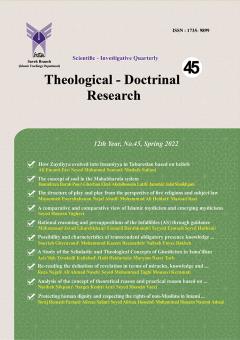The social revolutionary revolution is a social political goal. It is a process that is driven by mass action leading to the aspirations arising from long-term ideas and by breaking away from the past, which is accompanied by inequality and the future of new norms with justice And Aristotle believes that existing inequalities are among the factors behind the revolution. The purpose of the present study is to explain the sociology and comparisons of the revolutions in Egypt, Tunisia, Libya and Iran, which has been analyzed using the ideas of the Jews and the people. The research methodology is the methodology for reviewing and analyzing The content of the relevant texts is a tool for collecting field information. The results showed that among the common causes behind these revolutions: the political and administrative failure of the rulers, despotism and absolute freedom, and the taking of people, the widespread financial and social crises and its consequences (unemployment, Inflation, reduced economic growth, social harm, reduced social trust and socialism, anomalies, etc.), the presence of intellectuals and people in the scene, the existence of virtual social networks from other revolutions, the existence of guiding and minded leaders, dependence and unbalanced development, and the separation The revolution of Iran with these revolutions: the root of it Another distinction was that of the leadership of Iran, which came from the people and the people.
Subject Areas : کلام اسلامی
1 -
Keywords: Mysticism, Islamic mysticism, emerging mysticism, comparison, adaptation. ,
Abstract :
According to the Islamic view, the principle is based on the Human civilization has led to current crises, one of which is the crisis of spirituality and the neglect of man's relationship with God, and man, proud of his scientific achievements, has devoted all his efforts to work, capital and prosperity. Now, after five centuries, he has realized that material prosperity and comfort can not comfort him, and to fill this gap, he has turned to ancient and emerging mysticism, including Indian, Buddhist, Indian, and so on. This article seeks to study Islamic mysticism and emerging mysticism through analytical, descriptive and comparative methods, and in contrast to the views of rivals who have expressed the theory of objectivity and contradiction, has accepted the theory of conformity and aspect. Expresses their differences and similarities and in the field of their commonalities, conclusions have been reached which are that both mysticism, in order to heal the psychological and beautiful sufferings of seeing the world and tolerating everything and total peace and speech From love and happiness and peace and humiliation of a partial intellect, they have been contemporaneous with each other; But instinctability, not instinctualism, orbital duty instead of irresponsibility, responding to the basic needs of human beings instead of secondary needs, truth-seeking instead of superstition, are the distinguishing features of Islamic mysticism in comparison with emerging mysticisms.

